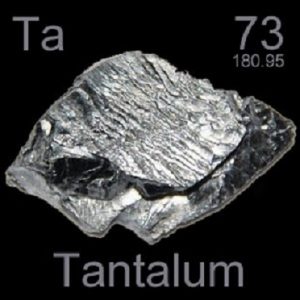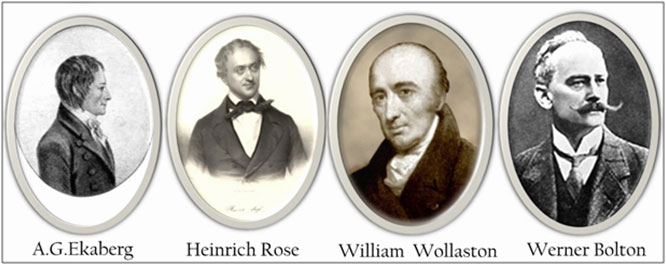In the middle of the 17th century, a very heavy black mineral (density of SAM®Tantalum is 16.68 g/cm3) found in North America was sent to the British Museum for safekeeping. After about 150 years, in 1801, British chemist Charles Hatchett accepted the ore analysis task from the British Museum. He discovered a new element and named it Columbium (later renamed Niobium) to in honor of the place where the mineral was first discovered – Colombia.

In 1802, when the Swedish chemist Anders Gustaf Ekberg analyzed their minerals (the niobium-tantalum ore) in Scandinavia, he discovered a new element. He named it Tantalum, referring to the name of Tantalus, the son of Zeus God in Greek mythology.
Because Niobium and Tantalum are very similar properties, they were once thought to be the same element. In 1809, the British chemist William Hyde Wollaston compared the Niobium oxide and Tantalum oxide. Although they gave different density values, he still believed that the two were identical substances.

By 1844, the German chemist Heinrich Rose refuted the conclusion that Niobium and Tantalum were the same elements, and proved that they are two different elements through chemical experiment. He named the two elements “Niobium” and “Pelopium” in the name of the Greek mythology of Tantalus’s daughter Niobe (the goddess of tears) and the son of Pelops.
In 1864, Christian Wilhelm Blomstrand, Henry Edin St. Clair Deville and Louis Joseph Troost clearly proved the Tantalum and Niobium are two different chemical elements ,and determined the chemical formula of some related compounds. In the same year, Demarinia heated tantalum chloride in a hydrogen atmosphere, and got tantalum metal for the first time through a reduction reaction. Early tantalum metals contain many impurities, and it was not until 1903 that Werner von Bolton first made pure tantalum metal.
This is a history column of SAM Sputter Target, aiming at introducing the history of different metals. If you are a metal lover or history lover, you can follow our website. For previous posts of metal history, you can search the keyword “history”.
Please visit https://www.sputtertargets.net/ for more information.
